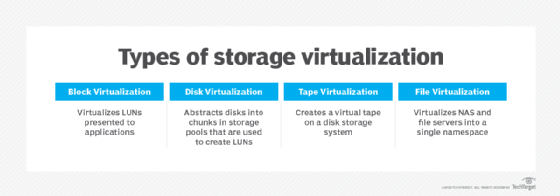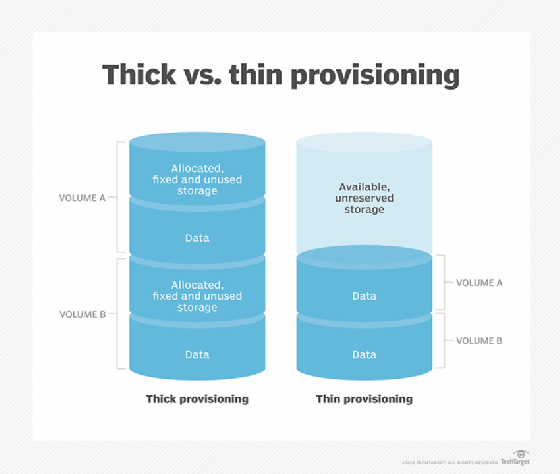virtual LUN (virtual logical unit number)
What is a virtual LUN (virtual logical unit number)?
A virtual LUN (virtual logical unit number) is a representation of a storage area that is not tied to any physical storage allocation. Virtual LUNs are used in thin provisioning (also known as virtual provisioning) for storage area network (SAN) management. A virtual LUN is often called a thin LUN.
A logical unit number (LUN) is a unique identifier for allocated physical storage. A LUN can reference an entire RAID group, a single drive or partition, or multiple drives or partitions. Unlike a physical LUN, the virtual LUN does not map to a specific device or allocated storage space, but to a virtual space that can be created in excess of the available physical space.

In a SAN, multiple factors determine the maximum size and number of physical LUNs that can be created. These include the number of RAID arrays, their RAID levels and the amount of available non-reserved storage space. A physical LUN cannot exceed the amount of available space. Virtual LUNs remove that limitation.
Because virtual LUNs are not tied to physical devices or allocated space, an administrator can create virtual LUNs that exceed the available storage. Space is not allocated to those LUNs until the data is written. This can help optimize storage utilization as it avoids allocating storage capacity and then having it sit unused. Virtual LUNs also provide more flexibility than physical LUNs and can help simplify storage management and provisioning.
What is the difference between a thin and thick LUN?
The difference between thick LUNs and virtual LUNs -- or thin LUNs -- is an important consideration when planning the LUN structure for a SAN or other storage infrastructure. A thick LUN is sometimes considered to be the same as a traditional (physical) LUN, but it may also be distinguished from the traditional LUN as being specific to a storage pool, rather than being created directly on a RAID group. However, for the purposes of comparing thick and thin LUNs, that distinction is unimportant.
A thick LUN differs from a thin LUN by the fact that all storage space assigned to that LUN is allocated at the time the LUN is created, rather than when it is needed. In addition, a thick LUN cannot be assigned more space than what is available in non-reserved storage. With thick provisioning, the capacity assigned to the LUN is reserved only for that LUN and it cannot be used for other LUNs or services, even if that capacity goes unused.
For example, if an administrator creates 10 LUNs at 1 terabyte (TB) each, 10 TB of the available capacity will be reserved. If only 10 gigabytes (GB) of storage are used from each LUN, 900 GB of capacity isn't being used, but it will still be unavailable for other purposes.

Thin provisioning makes better use of storage resources. Capacity is allocated on demand rather than being assigned up front. In this way, administrators can over-provision their available capacity to better utilize those resources. The LUN takes up only the amount of space actually used, making the rest of the space available for other LUNs or services. If the administrator creates 10 thin LUNs at 1 TB each but only 10 GB of storage is used from each LUN, the other 900 GB can be allocated as needed, rather than being wasted.
If using thin LUNs, administrators must carefully monitor storage usage to ensure that demand does not exceed actual capacity. Failure to do so could result in the disruption of workflows and daily operations. Virtual LUNs also come with increased overhead to support the processing associated with on-demand resource allocation. This overhead can have a significant impact on performance, depending on the type of supported workloads. Thick LUNs can deliver more reliable and predictable performance and are generally preferred when performance is a priority over resource utilization.







